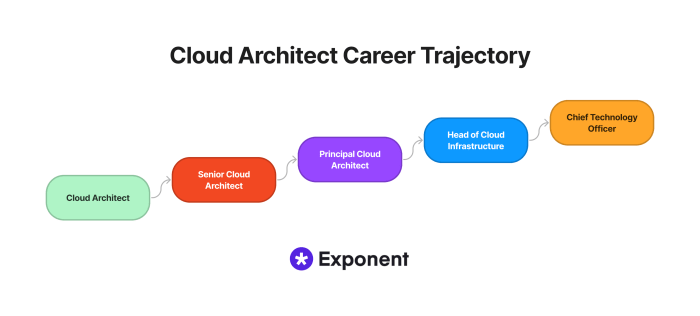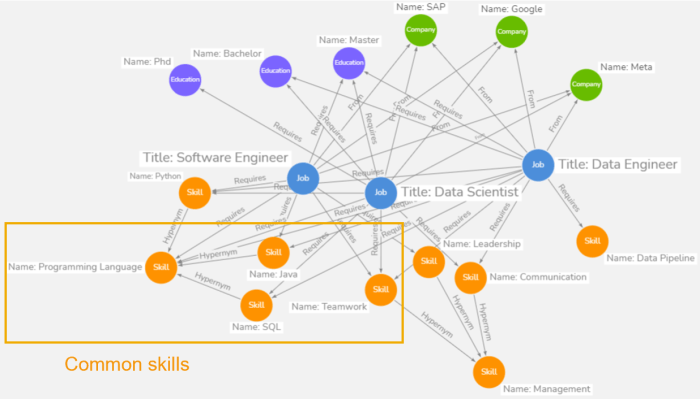Multi-cloud architecture offers significant advantages, enabling businesses to leverage the strengths of multiple cloud providers. However, this flexibility comes with a range of challenges, impacting everything from resource management to cost optimization and security. This exploration delves into the key hurdles faced in implementing and maintaining a successful multi-cloud strategy, providing insights into effective mitigation strategies.
From managing diverse cloud environments and coordinating resources across providers to ensuring data consistency and compliance, the complexities of multi-cloud architecture demand careful consideration. This document Artikels the key challenges and presents strategies for navigating these complexities, ultimately maximizing the benefits of this innovative approach.
Introduction to Multi-Cloud Architecture
Multi-cloud architecture is a computing strategy that leverages multiple cloud providers to host and manage applications and data. This approach offers businesses a degree of flexibility and control over their IT infrastructure, allowing them to select the best services from various vendors. This approach contrasts with a single-cloud strategy, which relies entirely on a single cloud provider.The core concept behind multi-cloud deployments lies in the strategic use of different cloud platforms to optimize resources and enhance resilience.
By distributing workloads and data across multiple cloud environments, organizations can reduce reliance on a single provider and gain access to a broader range of services and features. This diversification can lead to cost savings, increased security, and enhanced performance.
Benefits of a Multi-Cloud Strategy
A multi-cloud strategy offers numerous benefits for businesses seeking to maximize the advantages of cloud computing. These advantages extend beyond simple cost savings, encompassing factors such as increased resilience, flexibility, and optimized performance. It allows businesses to select the best-fit services from various vendors, potentially leading to improved security and cost optimization.
- Enhanced Resilience: Diversifying workloads across multiple cloud providers minimizes the risk of service disruptions or outages within a single cloud environment. This approach safeguards critical business functions by providing alternative resources.
- Cost Optimization: Businesses can leverage the pricing models and specific service offerings of different cloud providers to achieve the most cost-effective solutions for their needs. This strategy can involve choosing a specific provider for tasks best suited to their particular pricing model.
- Improved Security: By distributing data and applications across multiple providers, businesses can enhance security by mitigating risks associated with a single point of failure. This approach also allows businesses to implement security measures tailored to the specific needs and features of each cloud platform.
- Enhanced Flexibility: Organizations can tailor their cloud infrastructure to accommodate evolving business needs by choosing specific services from different vendors. This approach enables adaptability to changing requirements.
Types of Multi-Cloud Deployments
Organizations often employ different deployment models to optimize their multi-cloud strategies. These models reflect the specific needs and priorities of the businesses implementing them.
- Hybrid Cloud: This deployment model combines on-premises infrastructure with one or more public cloud environments. This approach allows organizations to maintain control over certain sensitive data and applications while leveraging the scalability and flexibility of cloud computing.
- Multi-Cloud: This approach utilizes multiple public cloud providers, potentially with different strengths in specific areas. This method can be used to avoid vendor lock-in and take advantage of varied services.
Multi-Cloud Setup Diagram
The following table illustrates a simplified multi-cloud setup. Note that this example is highly simplified and may not reflect all the complexities of a real-world scenario.
| Component | Cloud Provider 1 (AWS) | Cloud Provider 2 (Azure) |
|---|---|---|
| Web Application | Hosted on EC2 instances | Hosted on Virtual Machines |
| Database | Hosted on RDS | Hosted on SQL Database |
| Storage | S3 buckets | Blob storage |
Complexity and Management Challenges

Multi-cloud architectures, while offering numerous advantages, introduce significant complexities in management and coordination. The inherent diversity of cloud providers, each with its unique platform, tools, and pricing models, creates a significant hurdle for organizations seeking to leverage the benefits of multiple clouds. Effective management requires a sophisticated approach to resource allocation, security, and compliance across these disparate environments.The inherent complexity of managing multiple cloud environments arises from the diversity of cloud providers.
Each provider has its own control panels, APIs, and billing systems. Coordinating resources, tasks, and policies across these different platforms demands significant effort and specialized expertise. Furthermore, the management of infrastructure as code, security configurations, and compliance standards across these diverse environments presents a significant challenge.
Coordinating Resources Across Different Providers
Effective resource management in a multi-cloud environment necessitates meticulous planning and coordination. Different cloud providers offer varying services and pricing structures. Organizations must carefully evaluate the optimal mix of services across providers to ensure cost-effectiveness and avoid inefficiencies. The seamless integration of resources from different cloud providers requires standardized interfaces and automation tools to ensure efficient operation.
Automated provisioning and scaling processes, coupled with consistent monitoring, are crucial to mitigate the risk of inconsistencies and ensure operational efficiency.
Maintaining Consistency and Compliance
Maintaining consistency and compliance across multiple cloud environments is a critical challenge. Different cloud providers employ varying security measures, compliance standards, and data management protocols. Ensuring that data is consistently secured and compliant with industry regulations across different cloud environments is a considerable task. This requires a standardized approach to security configurations, access control, and data governance policies that can be applied across all utilized cloud providers.
Automated tools and standardized configurations can play a key role in ensuring consistency.
Administrative Overhead
Managing multiple cloud accounts and configurations can be a significant administrative burden. The proliferation of accounts and access keys across different providers can lead to a complex web of credentials and permissions, increasing the risk of security breaches. The need for dedicated personnel to manage these accounts and configurations can add considerable overhead to the IT department. Implementing robust access management policies, coupled with centralized management tools, can help streamline the administrative process.
Comparison of Cloud Provider Management Tools
| Cloud Provider | Management Tool | Key Features | Pros | Cons |
|---|---|---|---|---|
| Amazon Web Services (AWS) | AWS Management Console, AWS CLI, CloudFormation | Comprehensive suite of tools for managing various AWS services, Infrastructure as Code (IaC) support | Extensive feature set, mature technology, vast community support | Steep learning curve, can be complex for beginners |
| Microsoft Azure | Azure Portal, Azure CLI, ARM Templates | Robust platform for managing Azure resources, Azure Resource Manager (ARM) support | Well-integrated ecosystem, strong focus on hybrid and multi-cloud scenarios | Potential for complexity in larger deployments |
| Google Cloud Platform (GCP) | Google Cloud Console, gcloud CLI, Deployment Manager | Automation tools, strong focus on data analytics and machine learning | Strong automation capabilities, highly scalable, cost-effective | May require specialized skills for configuration |
This table provides a basic overview of the management tools available from different cloud providers. Each tool has its own strengths and weaknesses, and the best choice for an organization will depend on its specific needs and technical expertise. Organizations should carefully consider the capabilities and limitations of each tool before implementing a multi-cloud strategy.
Security Concerns in Multi-Cloud
Multi-cloud environments, while offering flexibility and cost optimization, introduce new security challenges. Managing security across multiple, disparate cloud platforms requires careful planning and meticulous implementation of robust security policies. A fragmented security approach can lead to vulnerabilities that single-cloud deployments may not encounter.Maintaining consistent security standards across different cloud providers is paramount. This necessitates a deep understanding of each provider’s security features and limitations, and a strategy for harmonizing security controls.
Implementing and enforcing a consistent security posture across all cloud environments is crucial to mitigate the risks inherent in a multi-cloud strategy.
Security Risks in Multi-Cloud
The inherent complexity of multi-cloud environments creates multiple entry points for security breaches. These vulnerabilities stem from the varied security controls and configurations of different cloud platforms, requiring a more nuanced security approach than a single cloud environment. Data breaches and misconfigurations are significant concerns. Maintaining consistent security policies across all providers is critical to minimize risk.
Data Breaches and Misconfigurations
Data breaches in a multi-cloud architecture can originate from vulnerabilities in one or more cloud environments. Misconfigurations in access controls, storage settings, or network configurations within one cloud platform can potentially expose data stored across other platforms. This highlights the importance of meticulous configuration management and ongoing security audits across all cloud environments.
Importance of Consistent Security Policies
A consistent security policy across all cloud providers is vital for mitigating risks. This policy should encompass access controls, data encryption, vulnerability management, and incident response procedures. Ensuring these policies are consistently implemented and enforced across all environments is critical to maintain a uniform security posture. Using a single security framework for all cloud providers simplifies management and improves compliance.
Security Best Practices for Multi-Cloud
Implementing a comprehensive security strategy across multiple clouds is essential. This involves adopting security best practices for each individual cloud provider, while also implementing a central security management system. This integrated approach allows for centralized monitoring, reporting, and enforcement of security policies across all platforms.
Multi-Cloud Security Risk Mitigation Strategies
Implementing effective mitigation strategies is crucial to minimize the impact of security risks in a multi-cloud environment. The table below Artikels potential security risks and corresponding mitigation strategies:
| Security Risk | Mitigation Strategy |
|---|---|
| Inconsistent Security Policies | Develop and enforce a standardized security policy across all cloud providers. Implement a centralized security management platform to track and enforce compliance. |
| Data Breaches in One Cloud Affecting Others | Implement robust data encryption at rest and in transit. Employ strong access controls and least privilege access principles. Regularly audit and test security controls in each cloud environment. |
| Misconfigurations in Access Controls | Implement automated security scanning and vulnerability assessment tools. Establish a security incident response plan to handle breaches promptly. Regularly review and update security configurations. |
| Lack of Visibility and Control | Implement centralized logging and monitoring tools across all cloud environments. Utilize security information and event management (SIEM) systems for centralized threat detection and response. |
Cost Management and Optimization
Managing costs effectively is paramount in a multi-cloud environment. The complexity of utilizing multiple cloud providers introduces significant challenges in tracking, analyzing, and optimizing spending. This necessitates robust cost-optimization strategies and effective monitoring mechanisms across all utilized platforms. Without proper management, multi-cloud deployments can quickly lead to substantial, and often hidden, cost overruns.
Cost Management Complexity in Multi-Cloud
Multi-cloud environments often present a fragmented view of cloud spending. Different cloud providers employ varying pricing models, resource allocation mechanisms, and billing structures. This heterogeneity makes it difficult to consolidate and analyze spending across all platforms, hindering accurate cost estimations and comprehensive cost optimization efforts. Furthermore, the intricate interplay of services and resources across different providers can obfuscate the true cost of specific applications or functionalities.
Identifying cost drivers and inefficiencies becomes a complex task when spread across multiple, independent billing systems.
Tracking and Analyzing Cloud Spending
Accurately tracking and analyzing cloud spending across multiple providers requires sophisticated tools and processes. Manual reconciliation of bills and resource utilization across diverse platforms is time-consuming and prone to errors. Automated tools capable of consolidating data from multiple providers are crucial for obtaining a holistic view of spending. These tools should provide detailed insights into resource usage, pricing models, and cost drivers across all utilized cloud platforms.
Need for Robust Cost Optimization Strategies
Effective cost optimization strategies are essential to mitigate the escalating costs associated with multi-cloud deployments. A comprehensive approach should encompass a combination of techniques to identify cost inefficiencies, implement optimization strategies, and automate cost monitoring. This includes careful consideration of resource utilization patterns, proactive cost forecasting, and the implementation of appropriate cost control mechanisms.
Monitoring and Controlling Costs Across Platforms
Effective cost monitoring and control in a multi-cloud environment necessitate a unified platform for data aggregation, analysis, and reporting. Cloud management platforms (CMPs) play a critical role in consolidating data from various cloud providers, offering comprehensive insights into spending patterns, and enabling automated cost optimization strategies. These platforms can also provide alerts for potential cost overruns and suggest optimization actions.
Regular reporting and analysis of cost data across all platforms is critical to identify cost-saving opportunities.
Cost Optimization Strategies in a Multi-Cloud Setup
A well-structured cost optimization strategy should include several key approaches.
| Strategy | Description | Example |
|---|---|---|
| Rightsizing Resources | Adjusting resource allocation to match actual demand, reducing overprovisioning. | Reducing the size of a virtual machine if it’s not being fully utilized. |
| Spot Instances | Leveraging lower-cost, on-demand instances for non-critical workloads. | Running batch processing tasks on spot instances to save on costs. |
| Reserved Instances | Locking in discounted rates for consistent, long-term use. | Purchasing reserved instances for frequently used servers. |
| Cost Allocation & Budgeting | Assigning costs to specific applications or departments for accountability. | Using a cloud billing tool to track costs associated with each project. |
| Automation of Tasks | Automating cost monitoring and optimization tasks. | Using a cloud management platform to automatically scale resources based on demand and identify potential cost savings. |
| Cloud Optimization Tools | Utilizing tools designed to identify and eliminate cost inefficiencies across cloud platforms. | Employing a cloud cost optimization tool to automate right-sizing of virtual machines. |
Data Management and Integration
Managing data consistently and efficiently across multiple cloud platforms presents significant challenges in a multi-cloud environment. Data silos, variations in data formats, and the need for seamless integration between different cloud services create complex obstacles. Effective data management is crucial for maintaining data integrity and enabling comprehensive analysis, which is essential for informed decision-making.Maintaining data consistency and integrity across various cloud environments is a key challenge.
Data replication, transformation, and validation processes must be robust and reliable to ensure that data remains accurate and trustworthy. Inconsistencies can lead to flawed insights and decisions, impacting business operations and strategic planning.
Challenges of Managing Data Across Platforms
Data resides in various cloud providers’ storage systems with differing structures, formats, and access mechanisms. This heterogeneity necessitates a standardized approach for data representation and management. Different cloud providers might have unique APIs and data governance policies, requiring specialized tools and expertise to navigate these differences. This necessitates careful planning and execution during data migration and integration to avoid errors.
Difficulties in Data Consistency and Integrity
Ensuring data consistency and integrity across different cloud environments is crucial. Data inconsistencies can arise from differing data formats, storage structures, and data governance policies. This can result in inaccurate analysis, misleading insights, and inefficient business processes. Robust data validation and transformation procedures are vital to mitigate these risks and ensure the reliability of the data.
Methods for Data Integration and Synchronization
Data integration in a multi-cloud environment requires effective strategies for data synchronization and transfer. This encompasses the use of ETL (Extract, Transform, Load) tools, APIs, and cloud-native data integration services. Real-time data synchronization is particularly important in dynamic environments, ensuring consistent data access and minimizing latency.
Comparison of Data Integration Tools for Multi-Cloud
Several data integration tools cater to multi-cloud environments. These include cloud-native tools like AWS Glue, Azure Data Factory, and Google Cloud Dataflow, as well as third-party solutions. A comparative analysis should consider factors like scalability, performance, ease of use, and cost-effectiveness. Features like automated data transformation, data quality monitoring, and governance capabilities are important considerations when selecting a tool.
Key Steps in Migrating Data Between Cloud Providers
| Step | Description |
|---|---|
| 1. Assessment and Planning | Thorough evaluation of the source and target data, including data formats, volume, and access requirements. Defining the migration scope, timelines, and resource allocation. |
| 2. Data Preparation | Cleaning, transforming, and validating data to ensure consistency and accuracy. This includes data normalization, deduplication, and handling missing values. |
| 3. Data Migration | Transferring data from the source cloud provider to the target cloud provider using appropriate tools and methods. This may involve batch processing, real-time replication, or a combination of approaches. |
| 4. Validation and Testing | Verifying the integrity and accuracy of the migrated data. This includes comparing the source and target data, running validation queries, and testing data workflows. |
| 5. Deployment and Monitoring | Deploying the migrated data in the target environment and establishing monitoring procedures. This involves configuring access controls, data pipelines, and performance monitoring to ensure smooth operation. |
Application Deployment and Migration
Deploying applications across multiple cloud platforms presents a significant challenge, requiring careful planning and execution. The heterogeneous nature of various cloud providers, differing service models, and varying infrastructure configurations necessitate a nuanced approach to application deployment. Migrating applications to a multi-cloud environment necessitates a comprehensive strategy encompassing not only technical considerations but also organizational adjustments.
Complexities of Deploying Applications Across Different Cloud Platforms
Deploying applications across diverse cloud platforms presents several complexities. These include variations in infrastructure, operating systems, and programming languages used by different providers. Maintaining consistency and compatibility across these environments requires careful configuration management and potentially necessitates code modifications. Furthermore, different cloud platforms offer distinct services, potentially requiring adaptations in application architecture to leverage the unique capabilities of each provider.
Difficulties in Application Portability and Compatibility
Application portability, the ability to easily move applications between different cloud platforms, is often hindered by incompatibilities in programming languages, libraries, and frameworks. Custom integrations and specific vendor-dependent components can significantly complicate the migration process. Maintaining application functionality and performance across different environments requires careful consideration and potentially substantial rework. Compatibility issues with cloud-specific services, such as databases or message queues, can also present obstacles.
Strategies for Seamless Application Migration to a Multi-Cloud Environment
Several strategies can facilitate seamless application migration to a multi-cloud environment. These strategies often involve employing containerization technologies, such as Docker, to package applications and their dependencies into portable units. Utilizing infrastructure as code (IaC) tools automates the deployment process and ensures consistency across environments. Refactoring applications to leverage cloud-agnostic technologies and APIs is another effective strategy to enhance portability.
Moreover, comprehensive testing and validation are critical throughout the migration process to ensure minimal disruption and maintain application functionality.
Structured Guide for Designing Application Deployment Strategies in a Multi-Cloud Setup
A structured approach to designing application deployment strategies in a multi-cloud setup is crucial. First, meticulously assess the application’s architecture and dependencies. Identify the potential compatibility issues across different cloud platforms. Next, define clear migration objectives and timelines. Establish a detailed migration plan, outlining the steps, resources, and responsibilities.
Prioritize applications for migration based on their criticality and complexity. Regularly monitor and assess the migration process for potential challenges and adjust the strategy as needed.
Tools and Technologies for Application Deployment and Migration in a Multi-Cloud Setting
The successful deployment and migration of applications in a multi-cloud setting rely on various tools and technologies. This is summarized in the table below.
| Tool/Technology | Description |
|---|---|
| Docker | Containerization platform for packaging and deploying applications. |
| Kubernetes | Orchestration platform for managing containerized applications. |
| Terraform | Infrastructure as code (IaC) tool for defining and managing cloud infrastructure. |
| Ansible | Automation tool for configuration management and application deployment. |
| AWS CloudFormation | Infrastructure as code service for defining and provisioning AWS resources. |
| Azure Resource Manager | Infrastructure as code service for defining and provisioning Azure resources. |
| Google Cloud Deployment Manager | Infrastructure as code service for defining and provisioning Google Cloud resources. |
Vendor Lock-in Mitigation

Multi-cloud adoption presents exciting opportunities for enhanced flexibility and resilience, but the inherent risk of vendor lock-in remains a significant concern. Understanding this risk and implementing effective mitigation strategies is crucial for successful multi-cloud deployments. Careful planning and execution are essential to ensure that the benefits of multi-cloud are realized without compromising future options.Vendor lock-in in a multi-cloud environment arises from the complexities of integrating services across different cloud providers.
The unique APIs, tools, and workflows of each provider can create interdependencies that make it difficult to switch providers without significant effort and potential disruption. This dependency can manifest in various ways, including specialized tools, custom integrations, and data migration challenges. The key is to proactively design a strategy that minimizes this dependency and ensures flexibility.
Understanding Vendor Lock-in
Vendor lock-in in the context of multi-cloud environments occurs when a business becomes overly reliant on a specific cloud provider’s services or tools, making it difficult or costly to switch to another provider. This reliance can stem from several factors, including the development of custom integrations, the adoption of proprietary tools, and the complexity of migrating data and applications. The resultant dependence can limit choices and flexibility in the long term.
Strategies to Mitigate Vendor Lock-in
Several strategies can be employed to mitigate the risk of vendor lock-in in a multi-cloud environment. These strategies aim to reduce reliance on specific providers by promoting flexibility and portability.
- Standardization of APIs and Tools: Using industry-standard APIs and tools wherever possible is crucial. This promotes interoperability and reduces the need for custom integrations, thus minimizing dependency on specific providers. This strategy emphasizes the adoption of open-source technologies and APIs whenever feasible.
- Modular Application Design: Designing applications with modular components enables easier migration and portability between different cloud providers. This approach allows for swapping out components without requiring significant rework, facilitating a transition to another provider.
- Data Portability and Interoperability: Data portability and interoperability are paramount. Utilizing standard data formats and ensuring data can be easily moved between providers is vital. Using cloud-agnostic data management solutions promotes flexibility and facilitates future transitions.
- Cloud-Native Application Development: The use of cloud-native technologies and development practices fosters a greater degree of portability and independence from specific providers. This approach ensures that applications are built to be cloud-agnostic, making migration smoother and less disruptive.
Importance of a Clear Multi-Cloud Strategy
A well-defined multi-cloud strategy is critical for mitigating vendor lock-in. This strategy should Artikel clear guidelines for choosing cloud providers, standardizing tools, and managing data. It should also define the criteria for migrating applications and data between different platforms. This strategic approach ensures consistency and reduces the risk of becoming trapped in a specific provider’s ecosystem.
Role of Open-Source Tools
Open-source tools play a significant role in mitigating vendor lock-in. They offer flexibility and portability, allowing organizations to avoid proprietary solutions and maintain control over their infrastructure. Open-source tools often support multiple cloud providers, enabling the organization to remain independent of specific vendors.
Comparison of Vendor Lock-in Characteristics
The following table provides a comparison of vendor lock-in characteristics across various cloud providers. This comparative analysis helps organizations understand the potential risks associated with each provider and tailor their multi-cloud strategies accordingly. The table illustrates the degree of integration, support for open-source tools, and migration complexity, enabling better risk assessment.
| Cloud Provider | Integration Complexity | Open-Source Tool Support | Migration Complexity | Data Portability |
|---|---|---|---|---|
| Provider A | High | Moderate | High | Limited |
| Provider B | Medium | High | Medium | Good |
| Provider C | Low | Excellent | Low | Excellent |
Compliance and Governance
Maintaining compliance with industry regulations and internal policies is crucial in a multi-cloud environment. The complex nature of managing data and applications across various cloud providers necessitates robust governance frameworks to ensure adherence to security standards, data privacy laws, and regulatory mandates. Failure to establish and enforce these policies can lead to significant financial penalties, reputational damage, and legal liabilities.
Importance of Compliance in Multi-Cloud
Compliance in a multi-cloud environment is paramount. It safeguards sensitive data, ensures regulatory adherence, and protects the organization’s reputation. A strong compliance framework reduces the risk of data breaches, non-compliance penalties, and legal challenges. By adhering to industry standards and internal policies, organizations can build trust with stakeholders and maintain operational efficiency.
Difficulties in Maintaining Compliance Across Multiple Providers
Managing compliance across multiple cloud providers presents significant challenges. Each provider may have different compliance certifications, security measures, and data handling practices. Ensuring consistent enforcement of policies across these disparate environments requires meticulous planning and dedicated resources. The lack of a unified platform for monitoring and managing compliance across providers can make it difficult to detect and address potential risks.
Methods for Ensuring Compliance Across Cloud Environments
Implementing consistent compliance policies and procedures across various cloud providers is vital. This includes establishing clear compliance standards, creating a centralized governance framework, and utilizing standardized tools for monitoring and auditing compliance activities. Regular audits and assessments of cloud environments can help identify gaps and weaknesses in the compliance strategy. Establishing a robust communication channel between different cloud teams and stakeholders is crucial for efficient problem-solving and incident response.
Creating and Enforcing Governance Policies in a Multi-Cloud Architecture
A comprehensive governance framework is essential for enforcing compliance in a multi-cloud environment. This framework should define roles and responsibilities for compliance, establish clear policies and procedures, and provide mechanisms for continuous monitoring and improvement. The framework should address data classification, access controls, security protocols, and incident response plans specific to each cloud provider. Regular training and awareness programs for personnel handling cloud resources are critical to ensuring effective compliance.
Regulatory Compliance Requirements for Different Industries
Maintaining compliance with specific industry regulations is vital in a multi-cloud setting. This table provides a high-level overview of some regulatory compliance requirements across various industries.
| Industry | Regulatory Compliance Requirements |
|---|---|
| Healthcare (HIPAA) | Data security, patient privacy, data breach notification, access controls |
| Financial Services (PCI DSS) | Data encryption, access controls, security monitoring, vulnerability management |
| Government (FedRAMP) | Security controls, risk management, access control, continuous monitoring |
| Retail (GDPR) | Data protection, data subject rights, data breach notification, transparency |
| Manufacturing (ISO 27001) | Information security management, risk assessment, security controls, audits |
Note: This table is not exhaustive and may not encompass all regulatory compliance requirements for each industry. Specific requirements may vary based on the organization’s size, scope of operations, and geographical location.
Performance and Scalability
Multi-cloud architectures, while offering flexibility and resilience, can introduce performance bottlenecks if not carefully managed. Optimization strategies are crucial to ensure consistent and scalable performance across different cloud providers. Effective monitoring and measurement frameworks are vital for identifying and addressing performance issues in a timely manner.Optimizing performance and scalability in a multi-cloud environment requires a comprehensive understanding of each provider’s strengths and weaknesses.
This includes evaluating factors like network latency, resource availability, and the specific features offered by each cloud platform. Furthermore, choosing appropriate architectural patterns and deployment strategies is critical for realizing the full potential of a multi-cloud environment.
Potential Performance Bottlenecks
Performance bottlenecks in multi-cloud deployments can arise from various sources. Network latency between cloud regions can significantly impact application response times. Inconsistent resource provisioning across providers may lead to performance disparities, particularly during peak demand periods. Furthermore, the complexity of managing and coordinating resources across different cloud platforms can lead to configuration errors and inefficient resource utilization.
The differences in the underlying infrastructure and services offered by various cloud providers can also introduce compatibility issues and performance degradation.
Methods for Optimizing Performance and Scalability
Several methods can be employed to optimize performance and scalability across different cloud providers. Utilizing regional data centers within each cloud provider can minimize network latency and improve application responsiveness. Implementing caching mechanisms to store frequently accessed data can significantly reduce the load on the primary application servers. Adopting appropriate architectural patterns like microservices or serverless functions can improve scalability and enable independent scaling of different components.
Moreover, continuous monitoring and performance analysis are essential for identifying and addressing performance bottlenecks proactively. Efficient resource allocation strategies, considering the specifics of each cloud provider, are also crucial.
Framework for Measuring and Monitoring Performance
A robust framework for measuring and monitoring performance across different cloud platforms should encompass key performance indicators (KPIs). These KPIs include metrics such as application response time, resource utilization, and network latency. Implementing automated monitoring tools and dashboards is crucial for tracking these KPIs in real-time. Furthermore, defining clear performance thresholds and alerting mechanisms will allow for swift responses to performance degradation.
Regular performance audits and reviews, comparing the performance across different cloud providers, will help to identify areas for improvement.
Comparison of Cloud Provider Performance
The following table illustrates a comparison of the performance characteristics of different cloud providers. It’s important to remember that performance benchmarks are dependent on specific workloads and configurations. This table provides a general overview.
| Cloud Provider | Latency (ms) | Compute Performance (instances/sec) | Storage IOPS | Network Bandwidth |
|---|---|---|---|---|
| AWS | ~50-100 | High | High | High |
| Azure | ~50-100 | High | High | High |
| Google Cloud | ~50-100 | High | High | High |
Strategies for Achieving Scalability
Scalability in a multi-cloud environment can be achieved through various strategies. Employing auto-scaling mechanisms within each cloud provider allows for dynamic resource allocation based on demand. Utilizing serverless functions or containers can enable on-demand scaling of individual components. Implementing a hybrid cloud strategy that combines the strengths of on-premises infrastructure with cloud resources can provide a more resilient and scalable solution.
Moreover, carefully designing application architectures to allow for independent scaling of different components is essential. Developing robust monitoring and alerting systems to detect potential performance bottlenecks will help prevent issues from escalating.
Choosing the Right Multi-Cloud Strategy
Selecting the optimal multi-cloud strategy is crucial for organizations aiming to leverage the benefits of multiple cloud providers while mitigating associated complexities. A well-defined strategy aligns with business objectives, ensuring cost optimization, enhanced security, and improved application performance. This approach requires careful consideration of various factors and potential strategies.A successful multi-cloud strategy hinges on a thorough understanding of the organization’s unique needs and goals.
This includes assessing current infrastructure, existing applications, and future growth projections. This understanding underpins the selection process, ensuring that the chosen strategy effectively addresses current requirements and anticipates future needs.
Factors to Consider in Multi-Cloud Strategy Selection
A comprehensive evaluation considers numerous factors. These include the specific requirements of applications, the desired level of control over infrastructure, and the financial implications of using multiple cloud providers. The choice also depends on the organization’s existing IT infrastructure and the skills of its IT staff.
- Application Compatibility and Requirements: Different applications may have varying performance needs and compatibility constraints with different cloud platforms. For instance, some applications might be optimized for specific cloud provider services, while others might be more flexible. Understanding these nuances is critical for choosing a strategy that allows each application to perform optimally.
- Cost Considerations: The cost of cloud services can fluctuate significantly across different providers and services. Evaluating the pricing models and potential cost savings across various cloud providers is essential to ensure the chosen strategy is cost-effective.
- Security and Compliance Needs: Security and compliance requirements must be met across all cloud environments. A multi-cloud strategy must account for data protection, regulatory compliance, and security policies that are consistent across all environments.
- Infrastructure Management Complexity: Managing multiple cloud environments can introduce increased complexity. Consider the organization’s IT team’s skill set and capacity to manage diverse cloud environments. A well-structured strategy minimizes the complexity associated with managing multiple platforms.
- Data Management and Integration: Data migration and integration across various cloud environments need to be addressed. A robust strategy for data management and integration ensures seamless data flow and accessibility across the chosen cloud environments.
Structured Approach to Choosing a Multi-Cloud Strategy
A structured approach to selecting a multi-cloud strategy ensures a systematic evaluation of the various options and their potential impact. This structured approach should include:
- Define Business Objectives: Clearly articulate the organization’s strategic objectives that the multi-cloud strategy will support. This will act as a guiding principle throughout the selection process.
- Assess Current Infrastructure and Applications: Evaluate the current IT infrastructure and applications to identify their compatibility with different cloud platforms. This assessment provides a baseline for understanding existing resources and needs.
- Analyze Cloud Provider Offerings: Carefully evaluate the capabilities and pricing models of various cloud providers. Identify specific services and features that align with the organization’s requirements.
- Develop Potential Strategies: Explore different multi-cloud strategy options, considering factors such as workload distribution, data management, and security requirements.
- Evaluate and Select the Best Strategy: Thoroughly assess the different strategies, considering their cost implications, security, and operational complexities. The chosen strategy should be aligned with the organization’s objectives and capabilities.
Multi-Cloud Strategy Options
Several multi-cloud strategies can be implemented, each with its own set of advantages and disadvantages.
- Hybrid Multi-Cloud: A combination of on-premises infrastructure and multiple cloud providers. This strategy offers flexibility and scalability, allowing organizations to leverage the strengths of each environment.
- Native Multi-Cloud: Deploying applications directly on multiple cloud providers without relying on on-premises infrastructure. This strategy provides flexibility and agility, enabling organizations to leverage the unique strengths of each provider.
- Specialized Multi-Cloud: Focusing on specific cloud providers for particular workloads or functions. This approach leverages the expertise of specific cloud providers in specific areas. For example, using one provider for data warehousing and another for application hosting.
Decision-Making Flowchart
[A flowchart illustrating the decision-making process for choosing a multi-cloud strategy would be displayed here. It would visually represent the steps Artikeld above, showing the logical flow from defining objectives to selecting a strategy. The flowchart would include decision points, such as evaluating cost, security, and operational complexity.]
Alignment with Business Objectives
Aligning the multi-cloud strategy with business objectives is paramount. This ensures the chosen strategy directly supports the organization’s overall goals and facilitates achieving its strategic targets. Aligning the strategy to the business objectives ensures that the chosen strategy is not only technically sound but also aligned with the overall business goals.
Epilogue

In conclusion, while multi-cloud architecture offers significant potential, the challenges related to management, security, cost optimization, data management, application deployment, vendor lock-in, compliance, performance, and choosing the right strategy are considerable. Careful planning, robust strategies, and a deep understanding of these complexities are essential for successful multi-cloud implementation and realizing its potential benefits. This comprehensive overview equips readers with a strong foundation for navigating the complexities of a multi-cloud environment.
Key Questions Answered
What are the common pitfalls in data integration across different cloud platforms?
Data integration challenges in multi-cloud environments often stem from differences in data formats, structures, and access methods between cloud providers. Ensuring data consistency and integrity across these platforms requires careful planning and the selection of appropriate tools and strategies.
How can organizations effectively track and analyze cloud spending across various providers?
Implementing robust cost-tracking mechanisms and utilizing dedicated cost-management tools are crucial. Analyzing cloud spending across providers demands a centralized platform and meticulous tracking of usage patterns, enabling informed decisions and effective cost optimization.
What are the key factors to consider when selecting a specific multi-cloud strategy?
Organizations should consider their specific business needs, the desired level of control, potential vendor lock-in, and the available expertise. A clear understanding of the specific use cases and alignment with overall business objectives is critical.
How can performance bottlenecks in a multi-cloud setup be mitigated?
Careful consideration of network configurations, appropriate resource allocation, and optimization of application deployments can help mitigate performance bottlenecks. Monitoring and analysis of performance metrics across different cloud platforms are essential.


